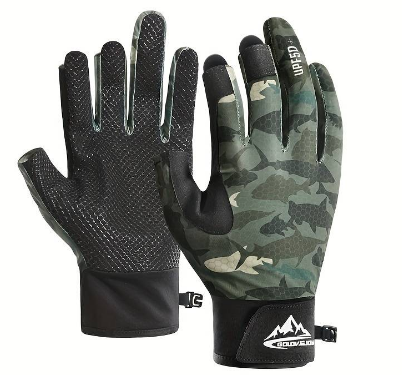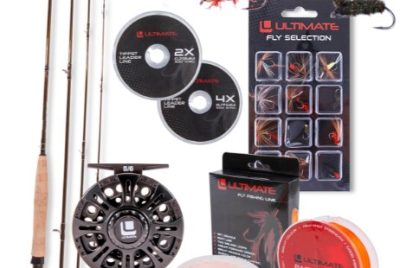Fly Fishing Gloves
Introduction
Welcome to the world of fly fishing! As an enthusiast and advisor, I’m here to guide you through an often-overlooked but essential piece of gear: fly fishing gloves. In this comprehensive guide, we’ll explore why fly fishing gloves are crucial, the types available, choosing the right material, sizing, waterproof options, care tips, and their versatile role in your fly fishing experience.
Why Fly Fishing Gloves are Essential
Protection from the Elements
Fly fishing often means you’ll be in close contact with water, and the elements can be harsh. Fly fishing gloves provide the protection you need to keep your hands comfortable and dry. When the sun is scorching, they shield your skin from harmful UV rays. In colder seasons, they offer insulation to keep your fingers warm, allowing you to fish comfortably for extended periods. Rain or shine, these gloves are your reliable companions.
Improved Grip and Control
Maintaining a firm grip on your rod, line, and flies is crucial for a successful fishing trip. Gloves enhance your grip and control, helping you handle your gear with ease. The silicone or rubberized palms and fingers on many fly fishing gloves provide excellent traction on slippery equipment. This added grip not only ensures a secure hold on your rod but also enhances your ability to handle delicate tasks like tying knots, changing flies, or releasing caught fish. It’s all about making your angling experience smoother and more productive.
Types of Fly Fishing Gloves
Fingerless Gloves
Fingerless gloves provide partial coverage, keeping your palms and wrists warm while allowing your fingers to remain free for knot tying and delicate tasks. These are great for moderate weather conditions when you need a balance between protection and dexterity. Imagine effortlessly tying intricate knots without exposing your hands to the chill of the water. Fingerless gloves offer precisely that advantage.
Full-Finger Gloves
Full-finger gloves offer complete hand protection. They’re ideal for colder weather and provide better overall warmth. Whether you’re fly fishing in the crisp autumn air or on chilly early mornings, these gloves ensure your hands stay cozy and comfortable. They offer full coverage for all your fingers, shielding them from the cold, wind, and moisture. This extra warmth is especially appreciated when you’re fishing in conditions that would normally make your fingers numb and unresponsive.
Choosing the Right Material
Neoprene Gloves
Neoprene gloves are waterproof and provide excellent insulation, making them ideal for coldwater fishing. They are durable and can withstand tough conditions. When you’re in the midst of a chilly river, neoprene gloves act as a barrier, keeping your hands dry and warm. These gloves are perfect for ice fishing or when the temperature takes a dip during your fly fishing expedition. Neoprene is known for its exceptional insulating properties, making it an ideal choice for chilly escapades.
Fleece Gloves
Fleece gloves are lightweight and warm, suitable for milder weather. They offer a good balance between insulation and dexterity. When the weather is cool but not extreme, fleece gloves provide the perfect level of comfort. Their soft, fuzzy texture keeps your hands warm without feeling bulky or restricting your movements. These gloves are great for those early spring or late fall fishing trips when the temperature calls for a bit of warmth without excessive insulation.
Sizing and Fit: Ensuring Comfort and Dexterity
Select gloves that fit your hands snugly but not too tight. Proper sizing ensures you have the dexterity needed for tasks like fly manipulation and line management. Fly fishing often involves intricate movements and tasks that demand nimble fingers. Your gloves should neither constrict nor be too loose; they should be an extension of your hands, providing a second skin that allows for delicate operations. The right fit ensures you can easily tie knots, unhook fish, and handle your gear without any hindrance.
Waterproof Gloves for Fly Fishing in All Conditions
Invest in waterproof fly fishing gloves for versatility. They keep your hands dry and comfortable, whether you’re fishing in the rain, snow, or simply dealing with wet conditions. Waterproof gloves are the fly angler’s best friend when the heavens open up or when you’re dealing with splashes and sprays from the water. They act as a reliable shield against moisture, ensuring your hands stay dry and your grip remains steadfast.
Maintenance and Care Tips
Cleaning and Drying Gloves
After each fishing trip, rinse your gloves with fresh water and allow them to air dry completely. This helps prevent odors and maintains their integrity. Properly cleaning and drying your fly fishing gloves is essential to extend their lifespan and ensure they remain comfortable to wear. Saltwater and residues from fish can lead to unpleasant odors and damage the material over time. By rinsing them with freshwater and allowing them to dry naturally, you can avoid these issues and keep your gloves in top condition.
Storage Practices
Store your gloves in a dry, cool place away from direct sunlight. This ensures they remain in good condition for many fishing seasons to come. Storing your fly fishing gloves is often an overlooked aspect of maintenance. Leaving them exposed to direct sunlight can cause the materials to deteriorate over time. Instead, store them in a cool, dry place. A breathable bag or container helps prevent dust and dirt from accumulating on the gloves, ensuring they’re always ready for your next adventure.
Fly Fishing Gloves: A Vital Part of Your Gear
Versatility for All Seasons
Fly fishing gloves are versatile and can be used in various weather conditions. They protect your hands from the elements year-round. Whether you’re facing the scorching sun, bone-chilling cold, or the occasional rain shower, having the right gloves can make all the difference. You can comfortably fish in any season without worrying about the weather taking a toll on your hands. With proper gear, you’re prepared for whatever nature throws your way.
Protecting Your Hands for Long-Term Enjoyment
Your hands are your most valuable tools in fly fishing. Protecting them with the right gloves ensures you can enjoy this sport for years to come. Fly fishing isn’t just a hobby; it’s a lifelong passion for many. By safeguarding your hands, you’re not only ensuring comfortable and enjoyable fishing experiences but also taking care of your long-term well-being. Your hands will thank you for the protection, allowing you to continue pursuing this wonderful pastime for years to come.
Conclusion
Fly fishing gloves are more than just accessories; they’re essential for a comfortable and successful fly fishing experience. Whether it’s protection from the elements or improved grip and control, these gloves play a vital role in keeping your hands in top shape for the long term. By choosing the right gloves and taking good care of them, you’re investing in countless enjoyable fishing trips to come.
FAQs
- Are fly fishing gloves necessary in warm weather?
- While not mandatory, fly fishing gloves can still be beneficial in warm weather for sun protection, grip enhancement, and minor hand protection. Even in hot conditions, these gloves can prevent sunburn and provide added comfort.
- What size of fly fishing gloves should I choose?
- Choose gloves that fit snugly but allow for dexterity. Refer to the manufacturer’s sizing chart for the best fit. Keep in mind that different brands may have slightly varying sizing guidelines, so it’s crucial to follow their recommendations.
- Can I use regular winter gloves for fly fishing?
- You can, but specialized fly fishing gloves offer better grip and control tailored to the sport. They also provide specific features like fingerless options for delicate tasks that standard winter gloves may lack.
- Are neoprene gloves suitable for fly fishing in all seasons?
- Neoprene gloves are excellent for coldwater and wet conditions but can be too warm for hot weather. Consider fleece or fingerless options for versatility in various seasons and climates.
- How often should I replace my fly fishing gloves?
- Replace your gloves when you notice signs of wear and tear or reduced waterproofing. With proper care, they can last several seasons, but keep an eye out for any deterioration, particularly in high-wear areas like the fingertips and palms.



